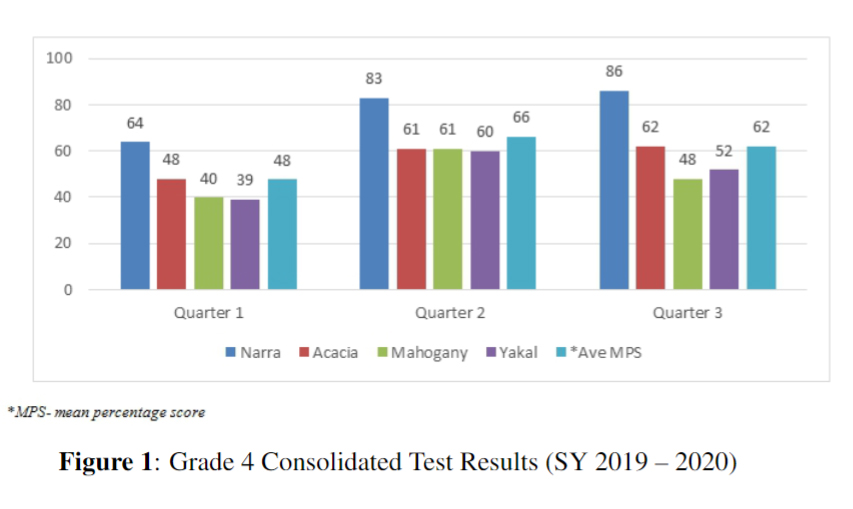Enhancing vocabulary among grade 4 deaf and hard-of-hearing (DHH) learners through an online sign language intervention: A mixed method study
Main Article Content
Abstract
Filipino Deaf and Hard-of-Hearing (DHH) learners are generally considered bilingual who use Filipino Sign Language (FSL) as their primary mode of communication. Written language in Filipino or English form-part of their secondary mode of communication but the DHH learners' familiarity with the English written language is evident due to the influence of the American Sign Language (ASL). There is a challenge among grade 4 DHH pupils to remember Filipino-written Araling Panlipunan (Social Studies) vocabularies and their corresponding manual sign. The overall purpose of this study is to address the difficulties encountered through an intervention called Araling Panlipunan (AP) Filipino Sign Language (AP-FSL). The intervention is in the form of multimedia learning resource material that is made accessible for any Android or iOS device. The study used mixed method approach in collecting quantitative and qualitative data. Quantitative data were gathered through the conduct of pre and posttest to thirty (30) grade 4 learners while the qualitative data were collected through survey forms and semi-structured interviews. Results revealed a significant increase in the mean percentage score from 9.33 to 83.47. Post test result fell under the independent reading level. The overall impression or rating of the stakeholders to the AP-FSL intervention was ``strongly agree'' which implies that an intervention to increase the AP vocabularies among DHH learners is strongly recommended. Stakeholders' recommendation to further enhance the intervention were also taken into consideration highlighting the importance of close collaboration with the Filipino Deaf community in utilizing appropriate manual sign in AP lessons.
Article Details

This work is licensed under a Creative Commons Attribution-NonCommercial-NoDerivatives 4.0 International License.
References
Oxford Business Group, 2017. Education reform in the Philippines aims for better quality and more access. Retrieved from: https://oxfordbusinessgroup.com/overview/thorough-examination-substantial-reform-has-brought-it-variety-challenges
Flores, M.F. 2012. K-12 to use sign language as mother tongue for deaf. Retrieved from: https://ph.news.yahoo.com/blogs/the-inbox/k-12-sign-language-mother-tongue-deaf143729869.html?guccounter=1&guce_referrer=aHR0cHM6Ly93d3cuZ29vZ2xlLmNvbS8&guce_referrer_sig=AQAAAAuFhLrhJlDh_XC2wOeaFMJngqxHXUPyiPruVHHe6gdOaM4b9lAh9MpSE46PlTWlo7mhASEdCS9pWiY4TEJiugD6y5NA2y1m1dsDuE6iHgmEUNUJXSJoR6ioL_vbd3GL7YIhMNv7D86Gejte5UFME51xCG3aOGfOiCaW3ix
Bulan, A. (2018). Filipino Sign Language Act is now a law. Here’s what we should expect. Retrieved from: https://nolisoli.ph/52059/filipino-sign-language-act-abulan-20181113/
PSD, 2020. Philippine School for the Deaf History. Retrieved from: https://psd.depedpasay.ph/about-us/
DepEd MEMORANDUM No. 042, s. 2020. Retrieved from: https://pnl-law.com/blog/no-more-4th-quarter-examination-for-schools-covered-by-suspension-of-classes-by-reason-of-covid-19-deped-memorandum-no-42-full-text/
Magsambol, B., 2021. Deped extends school year, moves last day of classes to July. Retrieved from: https://www.rappler.com/nation/deped-extends-school-year-moves-last-day-classes-to-july?fbclid=IwAR0s9_K093vKZqytOIbHSBZEKP67C7J2CK6KjumLo1sFCgkElHfqBruO-X8
Qi S. , & Mitchell R. E . ( 2012 ). Large-scale academic achievement testing of deaf and hard-of-hearing students: Past, present, and future . Journal of Deaf Studies and Deaf Education , 17 , 1 – 18 . doi: 10.1093/deafed/enr028
Llego, M. 2020. DepEd Learning Delivery Modalities for School Year 2020-2021. Retrieved from: https://www.teacherph.com/deped-learning-delivery-modalities/
Mayer, R. E., Heiser, J., & Lonn, S. (2001). Cognitive constraints on multimedia
learning: When presenting more material results in less understanding. Journal of Educational Psychology, 93(1), 187-1 98.
Mayer, R. E. (2009). Multimedia learning (2nd ed). New York: Cambridge University Press
Lacsamana, B., 2021. When a multifaceted language is reduced to what you see onscreen. Retrieved from: https://www.bworldonline.com/when-a-multifaceted-language-is-reduced-to-what-you-see-onscreen/
Marschark, M., Morrison, C., Lukomski, J., Borgna, G., & Convertino, C. (2013). Are deaf students visual learners? Learning and Individual Differences, 25, 156–162. doi:10.1016/j.lindif.2013.02.006
Creswell, J. W. (2015). A concise introduction to mixed methods research. Thousand Oaks, CA: Sage Publications
Llego, M. 2018. Revised Philippine Informal Reading Inventory (Phil-IRI). Retrieved from: https://www.teacherph.com/revised-phil-iri/


